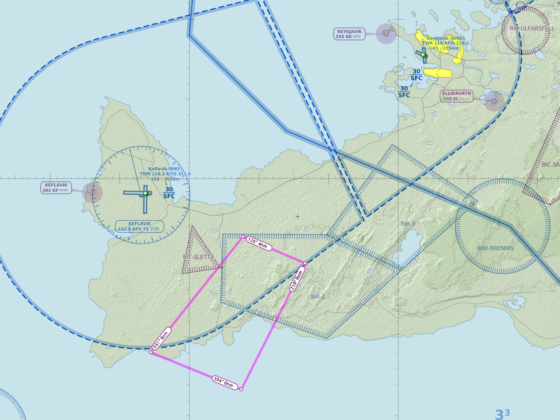A group of icelandic enthusiasts has discovered wrecks of the US army bomber Boeing B-17 “Flying fortress”, crashed in Iceland during World War II, one of the group members Guðmundur Gunnarsson told on his page on Facebook. The wrecks are on the slope of Gígjökull glacier in the famous hiking area Þórsmörk.

“The glacier Gígjökull returned the wreck after 76 years of hiding. This weekend I managed to go in a little nerd expedition, finding the wreck. We drove to Þórsmörk and to Gígjökull. We laced up our shoes and walked up a gorge by the glacier tongue. From there we climbed up a steep slope to the edge of the glacier, which a Slovenian employee in Húsadalur had told us would lead us to the right path. We found the wreck at an altitude of 1050 meters after a short search”, Guðmundur wrote.
He emphasized that the wrecks are in bad condition, mostly damaged by glacier.
“As the pictures show, the approach was overwhelming. The glacier has completely hacked the machine into itself. Like a crusher. There are clothes loops, shoes and parachutes inside, electrical equipment and scrap metal from the wreck. It was all so amazing that we could not decide to go down again. Now we want to know more about these events and the incredible fact that humans have survived this and settled down. Any advices or suggestions are welcomed. I do not believe that nobody witnessed this,” Guðmundur said.
According to open sources, the plane crash occurred on September 16, 1944, when the aircraft was traveling from the US to UK with refuel stop in Keflavik. The crew was 10 people. After take off from Keflavik the plane encountered dramatic weather conditions and then crashed on the glacier. One of the plane’s wings tore off and a fire broke out in its engines.

The entire crew survived unscathed and soon escaped from the plane because of the fear of explosion. The men crouched behind a rock nearby, wrapped in parachutes to keep warm, until the fire died out. After that, they got into the body of the plane and tried to show themselves with emergency flares. People in the surrounding towns noticed the flares but thought it was a military operation and did not take action.
After two difficult days of life in the wreck, which almost sank in the snow, they set off down the glacier, tied together with a line of parachutes. The aircraft’s navigator, Steven A. Memovich, guided the voyage down the cracked glacier and the steep cliffs of the Smjörgiljan. In the lowlands, a calm journey across the Markarfljót river took over them to the town of Fljótsdalur, which is the innermost town in Fljótshlíð. Six of the crew reached Fljótsdalur after a 13-hour walk, but the other four lay out during the night and were rescued the next day by locals.
















